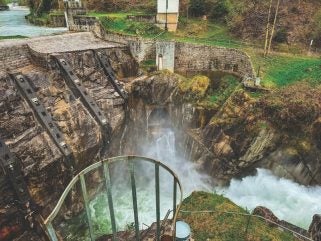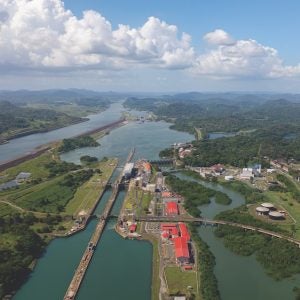
Staff from the Alaska District of the US Army Corps of Engineers recently swapped the glacial landscape of their daily lives in Alaska with those of Switzerland. And after visiting dam projects in Europe, the North American team catalogued their findings to return home with a renewed perspective for the improvement of the Lowell Creek Flood Diversion project, which is set in a mountainous region near Seward.

Lowell was the first flood control project to be constructed by USACE in Alaska during the 1940s. Now however, the existing flood diversion system does not adequately manage high water events and improvements are need to ensure continued safety and efficiency. To remedy this, USACE is set to construct an additional 5.4m wide tunnel and refurbish the existing tunnel, enhancing protection for the community of Seward.
Sediment bypass tunnels can act as safety valves for dams that encounter debris such as glacial silt, and which is a common material in many Alaskan waters. Not many worldwide projects employ such tunnels but with its glacial rivers and state-of-the-art dam infrastructure, including extensive use of sediment bypass tunnels, Switzerland was the perfect focal point for the USACE team to pursue more knowledge and see Swiss dam infrastructure up close.

As Cameron McLeod from the USACE explains, staff from the Alaska District, Seattle District, and Omaha District toured the inner workings of the Pfaffensprung sediment bypass tunnel, which is part of a dam that impounds the River Reuss. This system has been in use for over 100 years and has employed granite pavers in the lining of its tunnel because, when compared with other materials, granite is considered to be more resilient.

The team also visited the sediment bypass tunnel at Solis Dam in the nearby canton of Grisons. Like the dam at Pfaffensprung, Solis is a hydropower-producing dam and is of a similar design to Lowell Creek project. And as Swiss university ETH Zurich is currently conducting a study of abrasion upon different kinds of pavers in the Pfaffensprung and Solis tunnels, researchers here also shared valuable insights with the USACE team.
McLeod reports that granite pavers stood out as the “winning formula” for the dams in Switzerland, and the USACE group learned extensively about their characteristics and life cycle on their trip. The more expensive, granite pavers were considered to be more cost-effective in the long run due to their comparative durability, and is why USACE says it is “definitely leaning in that direction back home in Alaska.”
The UASCE team says the trip provided them with helpful lessons which will prove to be invaluable going forward, and better equip them to design the project at Lowell Creek.

All information and USACE photos courtesy of Cameron McLeod and the USACE.






